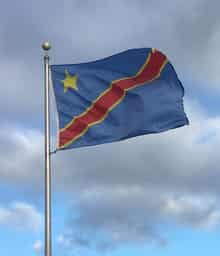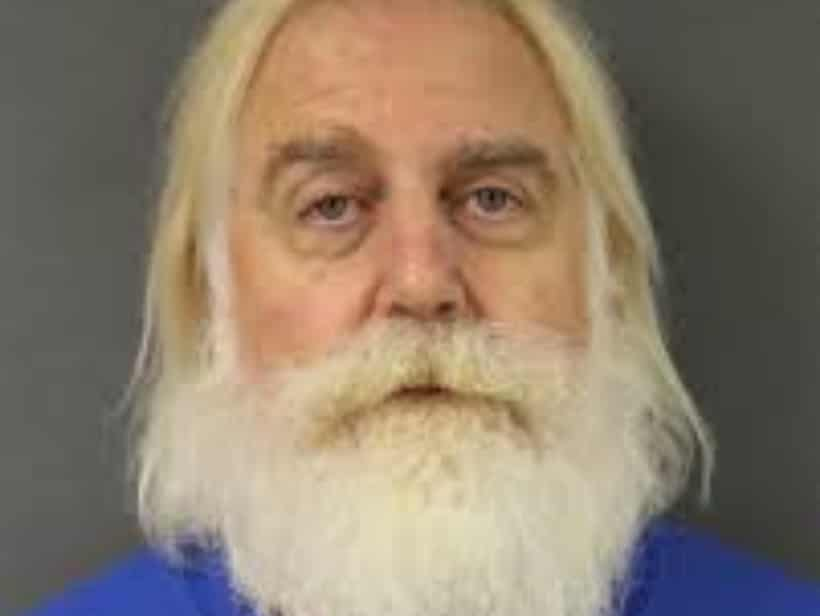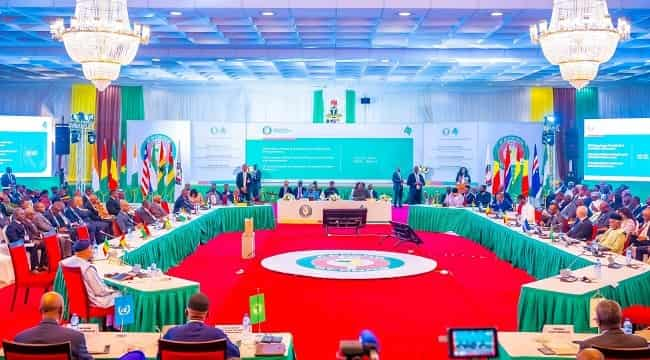Headline
Oromoni: Black Substance Found In Victim’s Intestine, LASUTH Lacks Testing Lab, Says Pathologist

A pathologist at the Lagos State University Teaching Hospital, Ikeja, Dr Sunday Soyemi, on Tuesday, said a blackish substance was found in the intestine of 12-year-old Sylvester Oromoni (Junior), a pupil of Dowen College, Lekki, Lagos, who died in controversial circumstances.
Soyemi stated this while being cross-examined by the family’s lawyer, Femi Falana (SAN), before the coroner inquest set up to unravel the cause of the boy’s death.
The news of Sylvester’s death went viral following a social media post by his cousin, Perry Oromoni, who alleged that some senior pupils of the college beat him up in his hostel because he refused to join a cult.
But the school denied the claim, stating that the boy complained of leg pains following an injury he sustained while playing football.
READ ALSO: Oromoni: Heavy Security Presence At Dowen College
A coroner inquest was subsequently set up to look into the circumstances surrounding the death.
At the Tuesday proceedings, Soyemi, while being led in evidence by the Director of Public Prosecutions, Babajide Martins, said the first autopsy carried out on the corpse was botched because the process was not properly done.
Soyemi, who faulted the first autopsy report, noted that some organs that would have revealed whether the victim died of ingestion of a poisonous substance were not cut by the first pathologist.
According to Soyemi, the deceased had a generalised infection that could have been treated with massive doses of antibiotics, intravenous fluid and blood transfusion.
He said, “Following the order for a post-mortem examination issued by the coroner, I conducted a second autopsy on the body of the deceased. An initial interim report was issued and finally, a full autopsy report was also issued to the office of the coroner.
“Prior to the conduct of the autopsy, I did a total body radiograph to rule out any skeletal injury, that is, fracture; none was found and the radiologist confirmed there was no fracture. Before I started the autopsy, the doctor who conducted the first autopsy was in attendance and he was in attendance throughout. So, I observed that the autopsy was not properly done. All that was not properly done is documented in my statement.
“For example, at the first autopsy, the pathologist never opened the oesophagus; the oesophagus is the food pipe. He also did not open the trachea; it is the air path through which we breathe. These are vital things that he should not have missed out.
“He concluded his report as chemical intoxication. For one to be intoxicated with a chemical, that chemical has to pass through the oesophagus, that is the food path. For someone that has not opened the food path, he cannot talk about chemical intoxication. A chemical that would be injurious to one, after ingestion, should cause injuries on the oesophagus because it would pass through the oesophagus, so it should never have been anything near chemical intoxication if he did not open the oesophagus.
“He also did not open the lungs; he did not detach the lungs from the heart. If he had done that and waded the lungs, it would tell him that something is wrong with the lungs. These are some of the many things he did not do. He did a botched autopsy and this was the cause of the controversy surrounding this case.”
However, Soyemi, during cross-examination by Falana, told the inquest that he did not carry out any test on the black substance found in the deceased’s intestine on the grounds that LASUTH did not have a laboratory to test poisonous substances.
The PUNCH reports that he further admitted that the substance found in the intestine could have been anything as it was not tested to confirm what it was.
Soyemi also denied authorising a television interview granted by the doctor representing Dowen College, Dr Iwikwe Isabella, who spoke on the autopsy findings.
He said, “That’s not the practice. I was embarrassed when the report was being discussed on TV. I was embarrassed in the sense that she didn’t perform the autopsy; she observed all through. It’s not the normal practice even if you have done the autopsy.”
Soyemi, who noted that his findings showed that the deceased had lobar pneumonia, infection of the lung, liver, and also infection on the right ankle, maintained that the deceased died of septicaemia.
READ ALSO: Dowen College: Sylvester’s Elder Sister Tells Court What Happened
He explained that if the deceased was physically assaulted or beaten, all the exposed areas would show haemorrhage.
Earlier, the presiding magistrate, Mikhail Kadiri, had a heated argument with Falana when the counsel objected to a question the director of public prosecutions asked Soyemi.
Falana noted that Kadiri was fond of saying the inquest was not a regular court at his convenience.
However, the duo later settled the matter amicably.
Headline
Thousands Reported To Have Fled DR Congo Fighting As M23 Closes On Key City

Fierce fighting rocked the eastern Democratic Republic of Congo on Tuesday as the Rwanda-backed M23 militia rapidly advanced towards the strategic city of Uvira, with tens of thousands of people fleeing over the nearby border into Burundi, sources said.
The armed group and its Rwandan allies were just a few kilometres (miles) north of Uvira, security and military sources told AFP.
The renewed violence undermined a peace agreement brokered by US President Donald Trump that Kinshasa and Kigali signed less than a week ago, on December 4.
Trump had boasted that the Rwanda-DRC conflict was one of eight he has ended since returning to power in America in January.
READ ALSO:Ambassadorial Nominees: Ndume Asks Tinubu To Withdraw List
With the new fighting, more than 30,000 people have fled the area around Uvira for Burundi in the space of a week, a UN source and a Burundian administrative source told AFP.
The Burundian source told AFP on condition of anonymity he had recorded more than 8,000 daily arrivals over the past two days, and 30,000 arrivals in one week. A source in the UN refugee agency confirmed the figure.
The Rwanda-backed M23 offensive comes nearly a year after the group seized control of Goma and Bukavu, the two largest cities in eastern DRC, a strategic region rich in natural resources and plagued by conflict for 30 years.
Local people described a state of growing panic as bombardments struck the hills above Uvira, a city of several hundred thousand residents.
“Three bombs have just exploded in the hills. It’s every man for himself,” said one resident reached by telephone.
READ ALSO:South Africa Beat DR Congo In shootout To Finish Third At AFCON
“We are all under the beds in Uvira — that’s the reality,” another resident said, while a representative of civil society who would not give their name described fighting on the city’s outskirts.
Fighting was also reported in Runingo, another small locality some 20 kilometres (12 miles) from Uvira, as the M23 and the Rwandan army closed in.
Burundi views the prospect of Uvira falling to Rwanda-backed forces as an existential threat, given that it sits across Lake Tanganyika from Burundi’s economic capital Bujumbura.
The city is the main sizeable locality in the area yet to fall to the M23 and its capture would essentially cut off the zone from DRC control.
READ ALSO:Stampede Kills 37 During Army Recruitment In Congo Capital
Burundi deployed about 10,000 soldiers to eastern DRC in October 2023 as part of a military cooperation agreement, and security sources say reinforcements have since taken that presence to around 18,000 men.
The M23 and Rwandan forces launched their Uvira offensive on December 1.
Rich in natural resources, eastern DRC has been choked by successive conflicts for around three decades.
Violence in the region intensified early this year when M23 fighters seized the key eastern city of Goma in January, followed by Bukavu, capital of South Kivu province, a few weeks later.
– Regional risk –
The peace deal meant to quell the fighting was signed last Thursday in Washington by Congolese President Felix Tshisekedi and his Rwandan counterpart Paul Kagame, with Trump — who called it a “miracle” deal — also putting his signature to it.
READ ALSO:FULL LIST: US To Review Green Cards From 19 ‘Countries Of Concern’ After Washington Shooting
The agreement includes an economic component intended to secure US supplies of critical minerals present in the region, as America seeks to challenge China’s dominance in the sector.
But even on the day of the signing, intense fighting took place in South Kivu, where Uvira is located, which included the bombing of houses and schools.
Witnesses and military sources in Uvira said that Congolese soldiers fleeing the fighting had arrived in the city overnight Monday and shops were looted at dawn.
Several hundred Congolese and Burundian soldiers had already fled to Burundi on Monday, according to military sources, since the M23 fighters embarked on their latest offensive from Kamanyola, some 70 kilometres north of Uvira.
Since the M23’s lightning offensive early this year, the front had largely stabilised over the past nine months.
Burundian President Evariste Ndayishimiye warned in February there was a danger of the conflict escalating into a broader regional war, a fear echoed by the United Nations.
Headline
‘Santa Claus’ Arrested For Possessing, Distributing Child Sexual Abuse Material

A 64-year-old man from Hamilton Township has been arrested in the United States after investigators linked him to the possession and distribution of child sexual abuse material.
The suspect, identified as Mark Paulino, had been working as a “Santa for hire” at holiday events, a role that placed him in repeated contact with children.
Mercer County officials said the investigation began on 4 December when detectives were alerted to suspicious online activity involving the uploading of child pornography from a residence in Hamilton Township. The probe quickly identified Paulino, a retired elementary school teacher, as the person involved.
READ ALSO:Nigerian Ringleader Of Nationwide Bank Fraud, Money Laundering Jailed In US, Says FBI
Police stated that Paulino had presented himself online as a retired teacher and had recently performed as Santa Claus for photographs and private, corporate, and organisational events. “Because this role involved direct, repeated contact with children, detectives worked around the clock to secure a search warrant,” authorities explained.
The warrant was executed on 5 December, during which police seized multiple items regarded as evidentiary. Paulino was taken into custody without incident and charged with possession and distribution of child sexual abuse materials, as well as endangering the welfare of a child.
Prosecutors have filed a motion to detain him pending trial. The investigation remains ongoing, and authorities have urged members of the public with relevant information to come forward.
Headline
Why West African Troops Overturned Benin’s Coup But Watched Others Pass

When Benin’s government over the weekend fought back a coup attempt, they had unlikely help: troops and air strikes from neighbouring countries.
West Africa has seen a series of coups over the past five years, leaving critics to cast the regional political bloc ECOWAS as having little more than stern communiques at its disposal to stop them.
But in Benin, Nigerian jets and troops were quickly dispatched to help their smaller neighbour foil the putsch attempt, while the Economic Community of West African States promised more were on their way, from Ghana, Ivory Coast and Sierra Leone.
Multiple factors were at play, analysts, diplomats and government officials told AFP, from the critical period where President Patrice Talon remained in partial control of his country and loyal army forces to the high economic and political stakes — especially for regional power Nigeria — of a country like Benin falling under a junta.
READ ALSO:How I and Obey’s Son Escaped Getting Caught In Benin’s Coup —Dele Momodu
Perhaps most important was the fact that Talon was not taken prisoner as the soldiers declared their takeover, and was able to call on Nigeria — and presumably ECOWAS directly — for assistance.
The Nigerian presidency said that Benin’s foreign ministry requested air support.
A source within ECOWAS told AFP meanwhile that regional leaders, including the presidents of Ivory Coast, Nigeria and Sierra Leone decided “to stand firm and not repeat their error in Niger”.
The toppling of the civilian government in Niamey in 2023 sparked sanctions and threats of military intervention.
The isolation — and empty threats — potentially exacerbated the situation: the junta not only remains in place but left ECOWAS and formed the Alliance of Sahel States with fellow breakaway nations Burkina Faso and Mali, also under military control.
READ ALSO:Coup In Guinea-Bissau? Soldiers Deployed Near Presidential Palace After Gunfire
– Nigerian security, economic links –
While pushing back on the coup offered an opening for Nigeria to regain a bit of its lost diplomatic shine of decades past, when it was a regional and continental heavyweight, there were also tangible economic and security reasons to intervene, analysts said.
“Unrest in Benin poses a direct risk to Nigeria’s economic and security priorities,” motivating a “fast Nigerian-fronted ECOWAS reaction,” Usman Ibrahim, a Nigerian security analyst at SARI Global, told AFP.
A former west African government minister said that the ECOWAS intervention heavily “depended on Nigeria’s willingness.”
Benin, like Burkina Faso, Mali and Niger, is battling jihadist insurgents in its north.
In October, jihadists from the Al-Qaeda affiliated Group for the Support of Islam and Muslims (JNIM) claimed their first attack in Nigeria last month, appearing to have crossed from the Beninese border.
READ ALSO:Coup Prophecy: It’s False Spirit -Mahdi Shehu Tells Primate Ayodele
“If the military takes over and mismanages the security situation… it’s a front in western Nigeria that the Tinubu administration has to address at a time when the international spotlight is obviously on Nigeria’s national security predicament,” said Ryan Cummings, director of Signal Risk, referencing a recent US diplomatic offensive against Nigeria over the handling of its own myriad conflicts.
Analysts also pointed out that Nigeria’s apparent lead in shoring up the pro-western civilian government of Benin, a former French colony, comes at a time when Abuja and Paris are increasing security ties.
“Troops were mobilised rapidly and Paris decided to support the operation,” the ECOWAS source said.
At the request of the Beninese authorities, France provided “in terms of surveillance, observation and logistical” assistance to the Benin armed force, an aide to President Emmanuel Macron told reporters Tuesday.
– Breakaway juntas –
Another likely worry was whether the putschists in Benin would join the AES, who maintain uneasy relations with their neighbours, said Nnamdi Obasi, senior Nigeria adviser at International Crisis Group.
READ ALSO:OPINION: Pastor Adeboye, Tinubu, Trump And Truth
But while some within and outside ECOWAS have painted the response to the coup in Benin as a turning point for ECOWAS, others aren’t convinced.
Critics often point out that ECOWAS does little when civilian presidents cement their rule without military means — extending term limits, altering the constitution to stay in power or cracking down on dissent.
Just last month, a coup in Guinea Bissau attracted the typical diplomatic-only playbook of harsh statements and communiques.
Guinea Bissau has fallen under military rule five times, and the latest putsch is suspected to have been ordered by the president himself — a “tough situation to handle”, noted Confidence MacHarry of SBM Intelligence.
Benin also commands a certain “prestige” as a “stable democracy in West Africa”, said analyst Ibrahim.
“The reaction to events in Benin does not firmly establish a novel or uniform protocol for ECOWAS,” Ibrahim said. “Rather, it underscores the continued selective and politically calculated nature of its engagements.”
(AFP)

 Metro4 days ago
Metro4 days agoEdo: How Pastor Hypnotised My Daughter, Made Her Abandoned NNPCL- Mother

 News5 days ago
News5 days agoOba Of Benin Suspends Priest, Reaffirms Appointment Of Okao

 Metro4 days ago
Metro4 days agoMy Husband Felt Insecure After I Got A Job, Accused Me Of Infidelity —Wife

 Headline3 days ago
Headline3 days agoJUST IN: Soldiers Announce Military Takeover Of Govt In Benin Republic

 News3 days ago
News3 days agoRufai Oseni Breaks Silence On Alleged Suspension From Arise TV

 Sports4 days ago
Sports4 days agoJUST IN: Full Draw For 2026 World Cup Group Stages Confirmed

 News5 days ago
News5 days agoOkpebholo Declares Edo Business-friendly

 News4 days ago
News4 days agoMalami Breaks Silence On Alleged Terrorism Financing

 News4 days ago
News4 days agoFULL TEXT: Gen Musa’s Inaugural Speech As Defence Minister

 Politics2 days ago
Politics2 days agoJUST IN: Tinubu Holds Closed-door Meeting With Rivers, Ebonyi Govs




















